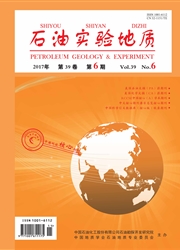

 中文摘要:
中文摘要:
根据阿姆达林盆地主要地质特征及已发现油气田的分布特点,分析了油气富集规律及其主控因素,并结合成藏要素分析,预测了有利区。阿姆达林盆地油气田在平面上的分布主要受烃源岩、构造和岩性等因素控制,并表现出油、气差异聚集特点。纵向上,上侏罗统基末里—提塘阶膏盐岩将含油气层系划分为盐下和盐上2套体系。盐下大型油气田的分布主要受有利储集相带和局部构造控制,而膏盐岩区域盖层的减薄以及走滑断裂的活动控制盐上油气田的分布。受储层、盖层和油气来源等因素综合影响,阿姆达林盆地最有利的勘探潜力区是位于南部木尔加布坳陷的盐下上侏罗统卡洛夫—牛津阶碳酸盐岩层系,尤其是具有构造背景的生物礁建造。
 英文摘要:
英文摘要:
This paper summarizes the rules of hydrocarbon accumulation and their controlling factors,and predicts some favorable exploration targets based on the integrated analysis of the basic geological features and distribution of discovered oil and gas fields in the Amu Darya Basin. In map view,the distribution of oil and gas fields is controlled mainly by source rocks,structures and lithology. The phenomenon of differential accumulation of oil and gas is also obvious. There are sub-salt and supra-salt petroleum-bearing layers,separated by the KimmeridgianTithonian evaporites. Sub-salt hydrocarbon accumulation is present in favorable reservoir belts and local structures. In addition,thinning of evaporite seals and activity of strike-slip faults are beneficial to supra-salt fields.According to the analysis of reservoirs,seals and source rocks,it is proposed that the sub-salt carbonate reservoirs of the Upper Jurassic Callovian-Oxfordian formations in the Murgab Depression,especially the reefs with structural background,are favorable exploration objectives.
 同期刊论文项目
同期刊论文项目
 同项目期刊论文
同项目期刊论文
 期刊信息
期刊信息
